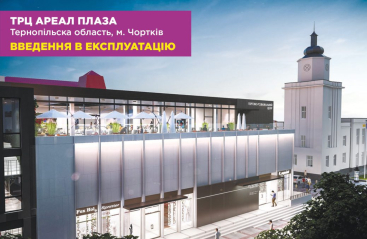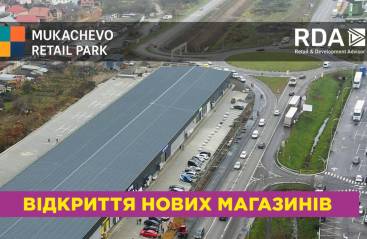
Andriy Zhuk, a partner of Retail & Development Advisor (RDA) and co-founder of Retail Association of Ukraine (RAU), in its expert column for the New Age portal. Business has analyzed the situation on the commercial real estate market and has projected on the number of vacant areas in malls and TECs after the end of the quarantine.
What is the state of the shopping and entertainment centers in Ukraine after several lockdowns, and what do they need to recover?
In the period of recent restrictions, malls have lost nearly 8 billion hryvnias of rental payments, and this isn't over. Stores should start working at full capacity and malls have to increase the number of visitors to compensate for losses in full.
However, it can be hardly realized in the nearest future, considering even light quarantine. In the wake of the January bans, the retail market lost its traditional high sales in March and April because of new restrictions. Besides, customers are within a negative information field that affects their attitude towards purchases and entertainment, particularly buying clothes and footwear (these retail categories were most affected by restrictions in red zones).
Will we see malls and TECs empty even when the quarantine is over? Let’s delve into a current situation before making predictions.
Retail Space Vacancy
All right, let's start with the good news. Commercial real estate demonstrated more than viable positions compared with Central and Eastern European markets. During lockdowns, when malls and TECs had to close, many lessors released tenants from rent that had come under limitations. At the same time, service fees remained obligatory along with marketing expenses. This approach was applied in 90% of cases, and that’s good. It allowed developers to keep their minimum of income stable and prevent outflow of tenants. As a result, vacancy stayed on at an edgy acceptable level even during the lockdown. So, the situation is not catastrophic compared with 2019.
Vacancy was 7.7% in Kyiv malls in early April, 2020 (it was 9.3% at the end of 2019) and reached its year-end 10%. Although the market is waiting for increased vacancy during the quarantine, because of tenants’ outflow, that has not happened. Agreements between malls and tenants, timely rotation of inefficient retailers allowed keeping vacancy at the maintenance level in crisis year.
It’s also crucial to consider that developers’ activities influenced the increased vacancy in 2020. Retroville with its total area of 76,800 sq. m, one of the most highly anticipated projects in commercial real estate, was commissioned last May. The second stage of commissioning took place in August 2020. These events increased total vacancy by 10%. In addition, it’s critical to remember about Blockbuster Mall opening (rental area is nearly 150,000 sq. m) in late 2019 and River Mall that appeared on the left bank of the Dnipro River in summer 2019 (its total rental area is approximately 55,000 sq. m).
So, the total stock of quality shopping spaces increased by 5.1% and amounted to 1,579,000 sq. m for 2020 compared with late 2019.
Tough competition in represented by new commercial facilities positively influenced the market. It encouraged old shopping centers constructed more than 10 years ago to renovations, change of tenant-mix, and even switching to another segment of real estate. It comes to Cosmopolite, Aladdin, Piramida, Dream Town, Karavan Outlet, and others. Meanwhile, more 12 locations with a total shopping space of 763,000 sq. m are under development. They might be commissioned in the next few years.
Rental Rates
Annual rate of rental reduction ranged from 20% to 30% by the end of 2020. Rents of elite space from 100 to 200 sq. m in leading shopping malls amounted to $60/sq. m per month. Prices for shopping areas in top locations and central streets in Kyiv were $65/sq. m per month.
Tenants got discounts based on their efficiency in operational facilities. Some new lease agreements shifted to a turnover rate. In most cases, contracts contain a new formula of imputed rents that implies concessions for the early part of a store’s work with further migration to standard terms. Due to the experience of previous crises, lessors do all the best to keep tenants. Both sides have learned to find mutually beneficial solutions since communication is a clue to recovery on condition of the purchasing power stabilization.
Overall turnover losses of tenants in commercial facilities exceeded 62 billion hryvnias during this lockdown and Saturday/Sunday quarantine. Main tenants like entertainment, fashion, restaurants, and cinemas suffered the most. Restaurant receipts fell 50% on the market, staff cuts increased by 33%, and nearly 33% of restaurants closed. Things are even worse, considering 12%-15% of the reduced profitability in catering. The staff of cinemas reduced by 30%, and their attendance decreased by 60% because of world premieres’ rescheduling and the lack of quality content at the box office.
However, some positive moments are still visible. According to international retailers on Ukrainian market, sales in Ukraine are significantly higher than in most European countries after the lifting of restrictions. For example, according to H&M Group’s annual report, sales increased by 5% compared with 2019 and amounted to 22.3 million euros. In contrast, deterioration of the market was 10−20% in most countries in Europe.
However, it’s crucial to understand that surge in demand always follows the lifting of the quarantine. However, it has an unsustainable outcome that soon is usually changed by more passive purchases.
Besides, it’s necessary to note that such an important measurement for Ukrainian retail as Consumer Confidence Index (CCI) fell to 65.7 points in December 2020 after reaching its 12-year maximum (97.5 points) in September 2019. In other words, the pandemic didn’t cause significant worsening of consumer’s sentiment as, for example, during Russia’s military aggression in 2014. At the time, the Consumer Confidence Index fell to 40 points and became the lowest since the financial crisis in 2008, when CCI reached 41 points.
What can help TECs overcome hardships?
Retailers need a lot of time to return consumers to malls. It’s necessary to awaken their forgotten habit to visit malls, desire to enjoy movies in cinemas, etc. For this purpose, considerable investments are crucial. Besides, it’s necessary to consider that a yellow zone may quickly turn into a red one because of the sluggish pace of vaccination. A new wave of incidence is already expected in autumn, and the situation will become worse again. That’s why shopping and entertainment centers need State aid and encouragement for pulling out of the crisis. Otherwise, the process can go on for years. For now, it comes to the following anti-crisis measures:
- Equality in working conditions for the entire retail industry during the quarantine. State must not prevent retail from operating on equal terms with other commercial segments, regardless of business activities. It’s important to provide opportunities for fashion-retail to work (for example, by appointment for a fitting) and remaining shopping centers opened at the height of incidence. Of course, established sanitary standards, restriction on attendance, etc., should be respected.
- Assistance with the settlement of relations between shopping centers and lending companies, the change of the approach to taxes are required. Many shopping facilities have credit liabilities. They may be a problem, as banks practically are not entirely cooperative and don’t provide opportunities to restructure debts and reschedule the payment of liabilities. It’s critical to give a ruling that will regulate relationships between shopping centers and lenders during quarantines and lockdowns. Malls need grace periods, local tax exemption for a longer period than the quarantine lasts, and reduced value added tax.
- Lower acquiring. In Ukraine, acquiring and interchange-commission are the highest in Europe. This factor doesn’t encourage those industries’ development that suffered heavy losses during the quarantine, meaning restaurants and movie industry. For now, they have to perform 80% of their transactions via bank transfer.
- A primary vaccination of retail’s staff. Vaccination but not lockdown is the main response to pandemic. This problem is especially painful for retail. Members of the Association of retailers as employers are willing to finance their staff’s vaccination.
Source: biz.nv.ua



